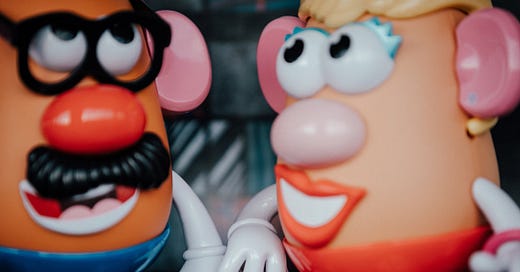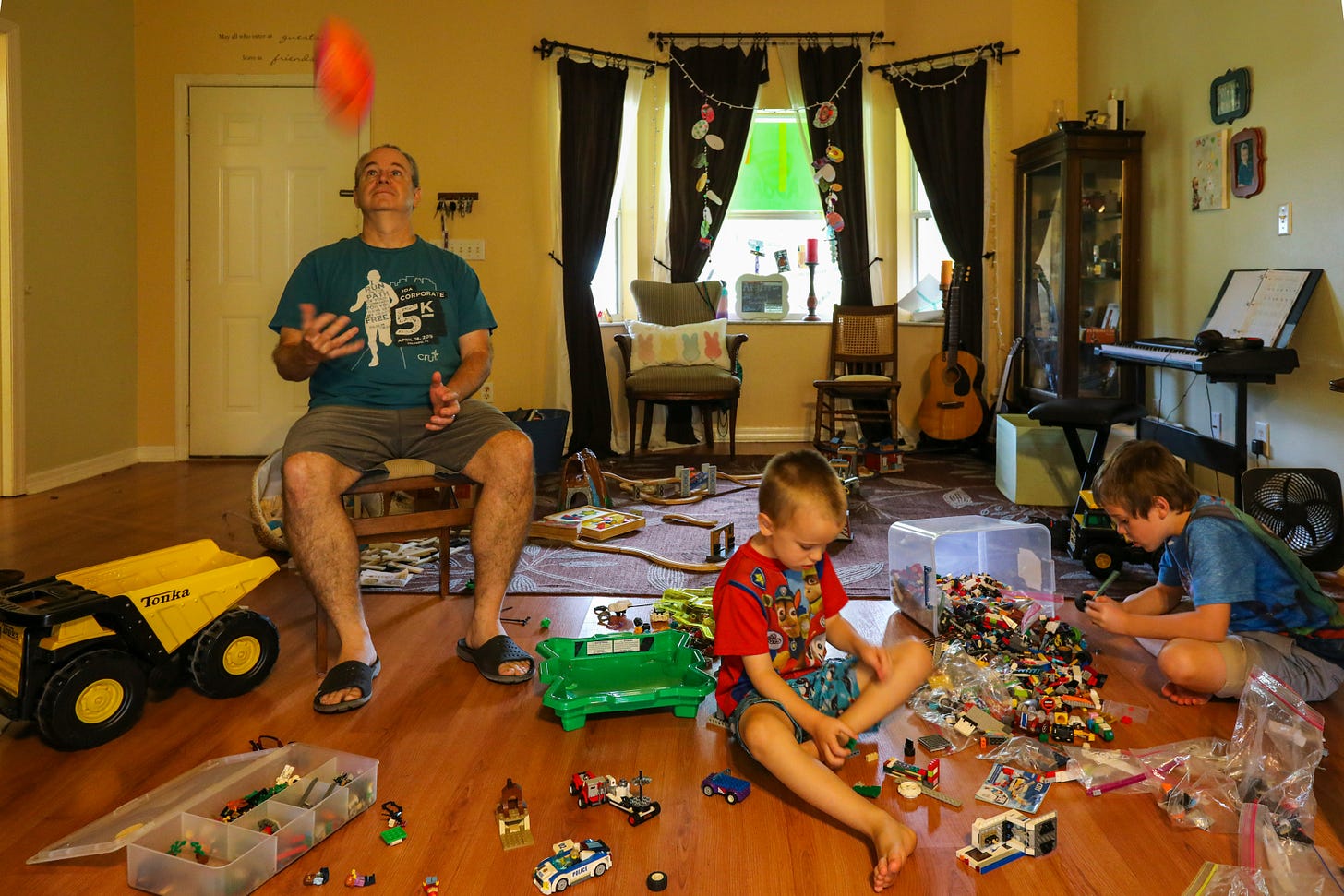Children love real, physical toys. They always have and always will, even if the desire for them has been temporarily hijacked by flashy digital devices. Get beyond that, and you will find that children still want to engage with toys of all kinds, deriving hours of pleasure and play from simple items that never need to be recharged or updated.
Acquiring toys, games, and other materials for screen-free activities is a fundamental part of helping kids get off devices. You must ensure that your home has things for kids to do, which takes effort and planning on the part of the parent. It may require money, too, but think of it as a reallocation of funds that would otherwise be spent on data plans or upgrading devices.
It doesn’t have to be expensive; you can find many things for cheap at second-hand stores, garage sales, and swap sites online. Birthdays and holidays are a good time to give nicer, new toys. My mom’s best friend has a great approach of looking up lists of award-winning toys when choosing what to buy for Christmas. Her gifts are always the biggest hit.
If you worry you’ve forgotten what kids like to do, or you are worried your kid won’t want to play in an “old-fashioned” way, rest assured that this is not the case. Children’s fundamental nature has not changed in one generation. At their core, they remain the same curious, playful little beings that they’ve always been, eager to imagine and interact given the right conditions.
Take a moment to think about what you liked to do as a kid.
How did you fill your time in a pre-smartphone era? I, for example, spent long hours building forts in the forest, “cooking” in my mud kitchen, playing with a Playmobil-filled dollhouse, using sculpting clay and paints, making jewelry from a box of beads, playing dress-up with my sister, and playing Monopoly. Childhood activities are influenced by geography, of course, but a common thread runs through adults’ nostalgic accounts of the past: We always found things to do because we had to.
How can we reclaim that feeling for our own children, rescuing them from the all-consuming nature of digital-based entertainment and releasing them into a world where play is embodied?
Start by filling your home with real toys.
Offer them classic board games, like Battleship, The Game of Life, Stratego, Risk, Clue, Operation, Settlers of Catan, etc., which are classic for good reason. Checkers, chess, dominoes, and my kids’ favourite Canadian game “crokinole” are eternally appealing, especially if the pieces are made from wood and stone instead of plastic. We’re big Scrabble fans, too.
The following list of screen-free toys and activities comes from Dr. Victoria Dunckley’s 2015 book, Reset Your Child’s Brain, which was far ahead of its time in assessing the negative effects of screen time on children’s well-being. She describes these items as “good to have on hand.” I have expanded it slightly based on things my kids enjoy. These are not age-specific; many are adaptable and will be used differently by kids of different ages and abilities.
Clay or Play-Doh
Legos
Magnetic building sets (i.e., Magna Tiles)
Models
Jacks and marbles
Art supplies
Musical instruments
Train sets or Hot Wheels tracks
Card games (Dutch Blitz is our family fave)
Solitaire peg board games
Rubik’s Cube or Pyramid
Jigsaw puzzles
Jewelry-making kits
Knitting, crochet, or macramé supplies
Embroidery thread or gimp for bracelet-making
Books or comics
Bikes, skateboards, skates, scooters
Dolls and action figures
Jump rope and hula hoop
Yo-yo and slinky
I would add:
An abundant supply of construction paper, scissors, glue, and markers
Cardboard boxes and heavy-duty tape
Colouring books or paint-by-number books
Klutz art kits
Classic toys like Mr. Potato Head, Etch-a-Sketch, Transformers, K’nex, etc.
Playmobil sets
Slot-cars and track
Trampoline and slack line (in yard)
Science kits
Magic tricks kit
Juggling balls and bouncy balls
Hexbugs
Dungeons & Dragons kit (which my kids play with their dad)
Badminton rackets
Air hockey table
Miniature tea party set
A small indoor tent
Puppets
Kids’ gardening tools or construction tool belt
Costume box
This list is far from exhaustive, but hopefully it gives you some ideas for acquiring new toys. Some toys fail to interest kids, while others reach stratospheric levels of success that you’d never anticipate. The point is to keep trying and see what sticks. Novelty always wears off, so don’t hesitate to remove certain toys from view (stash them in a basement or garage) for a few months before reintroducing—ideally, to great enthusiasm.
Children have always played with toys and can do so again. You just need to create an environment that is conducive to it.
You Might Also Like:
Where Are All the Real Toys This Christmas? (my piece in the Toronto Star)
Give Them Books
Let Them Have Silence
What Do Screen-Free Kids Do All Summer?
Note to Subscribers:
A big heartfelt thank you to anyone who has opted to upgrade their subscription to paid. You make this writer immensely grateful! I continue to keep all content open and accessible to readers, but my dream is for this newsletter to become self-sufficient. That is only possible is through reader subscriptions. I received this lovely note last week:







Any suggestions for the best first board game or card game? I have an active 3 year old
Great list. Brought back a lot of great memories too. And as someone married to a Canadian, I’ve grown fond of crokinole. That really needs to take off south of the border.